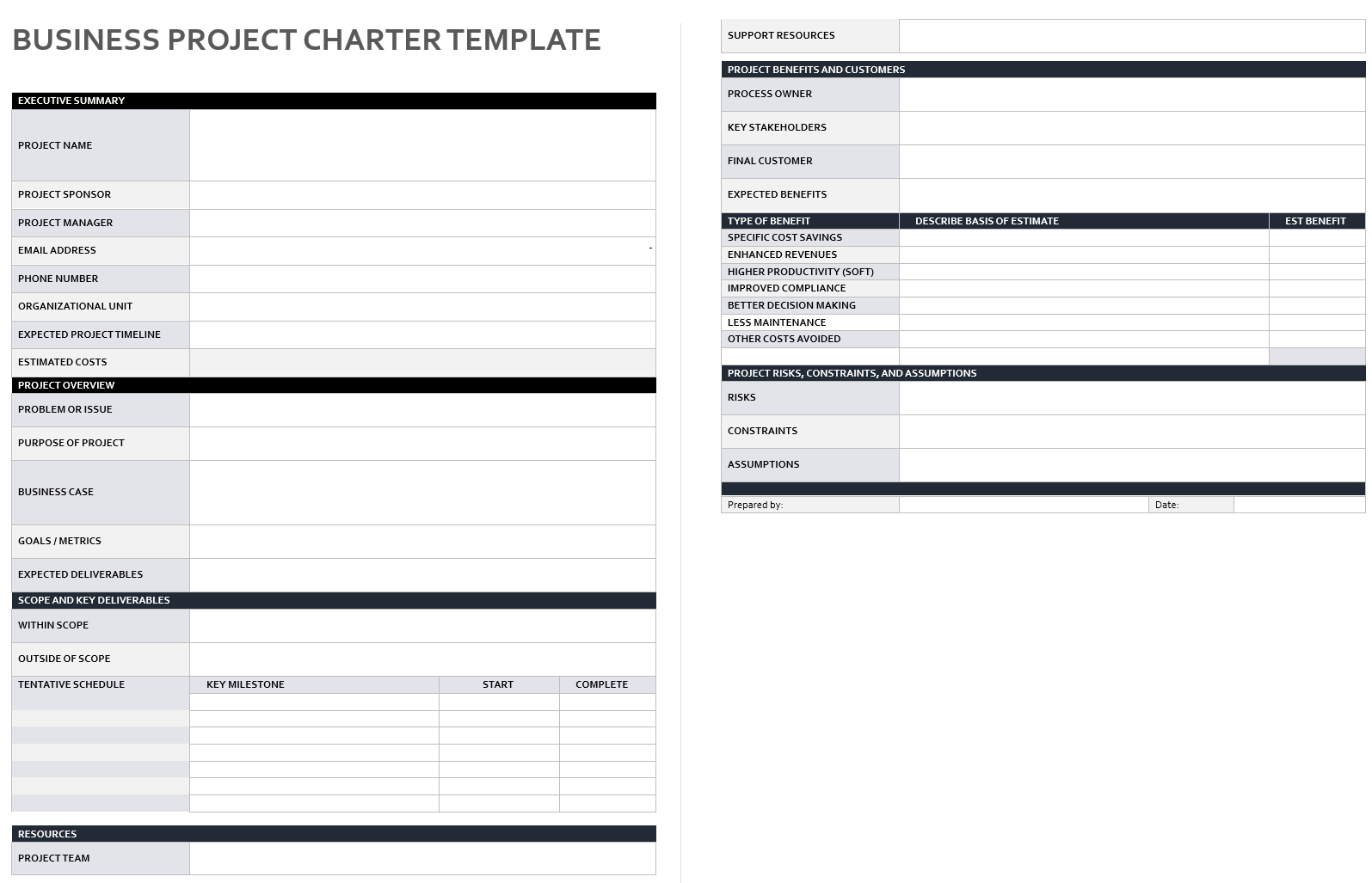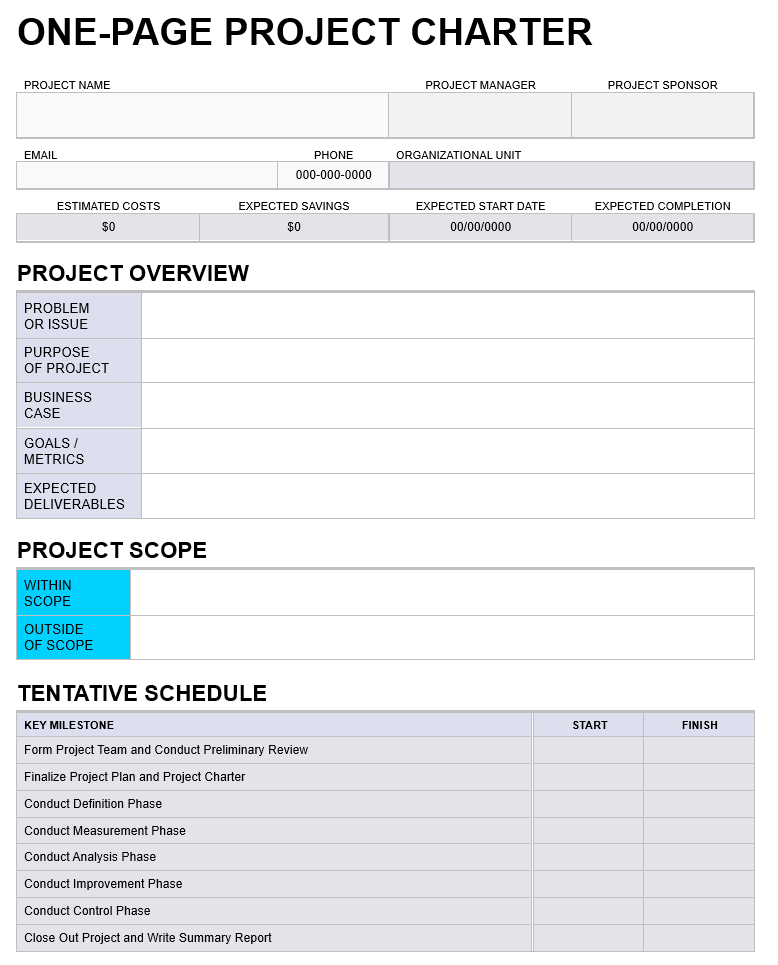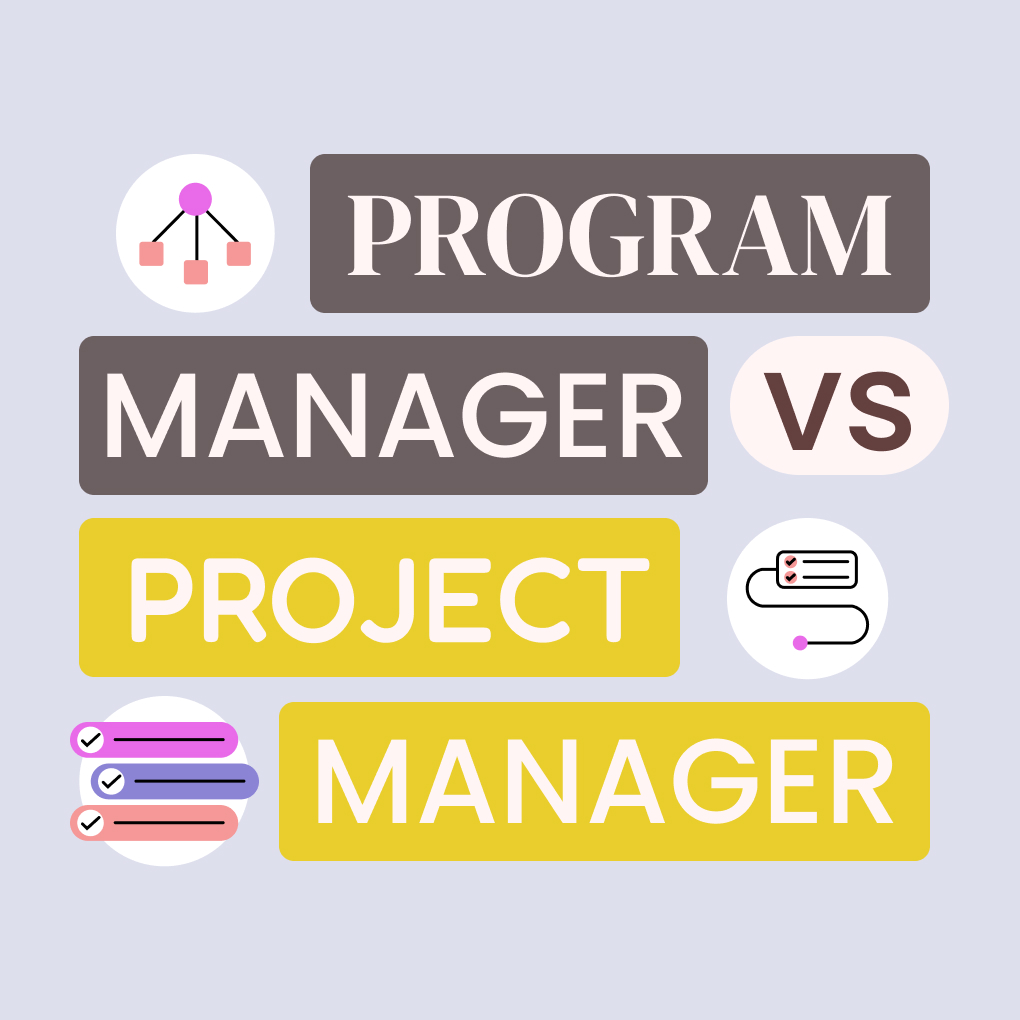Starting a new project without a clear plan can waste resources and frustrate teams. A well-defined Project Charter is key to keeping a project on track. It outlines goals, scope, and stakeholders. This guide is for professionals who want to create effective project charters. It covers everything from basic definitions to advanced management tips. You will find examples, step-by-step instructions, and a free project charter template for Word and Google Docs. Additionally, it shows how modern tools like Morningmate can simplify creating and managing your charter document. This helps align your team and launch projects with confidence.
What is a Project Charter?
Before we look at templates and examples, let’s first understand what a project charter is. It plays a key role in the project lifecycle.
A Project Charter is a formal document that marks the official beginning of a project. It authorizes the project manager to allocate and direct company resources toward project objectives. More than just a kickoff document, it serves as a mutual agreement between the sponsor, stakeholders, and the project team. The charter defines the project’s vision, objectives, scope, and high-level structure before detailed planning begins. Often referred to as the project’s “birth certificate” or constitution, it provides legitimacy and sets foundational boundaries. According to the PMBOK® Guide by the Project Management Institute (PMI), the charter is a critical component of the project planning process.
Purpose and role in project management
The project charter document is much more than a simple formality. It serves several important purposes:
- Launch the Project: Officially start the project and give the project manager the power to lead and use resources. It transforms an idea into a formally recognized initiative.
- Create Alignment: Help everyone involved understand the project’s main purpose, goals, and limits from the beginning. This can prevent expensive misunderstandings later on.
- Sets Boundaries: It defines the initial scope. This outlines what is included in the project and, importantly, what is not included. This helps prevent scope creep.
- Defines High-Level Objectives: It clearly states the project’s goals. It explains how success will be measured. This links the project to important business objectives.
- Identifies Key Players: It names the project sponsor, project manager, and other important people. This helps clarify roles and responsibilities.
- Secures Initial Commitment: The sign-off process signifies commitment from key stakeholders, particularly the sponsor who champions the project.
- Reference Point: It acts as a steady guide during the project. This is especially helpful in the planning phase and when dealing with changes or challenges.
Essentially, the charter acts as the North Star for the project, guiding subsequent planning and execution efforts.
Project charter vs Project plan vs Business case
It is common for new project managers to mix up the project charter with other important documents. These include the project plan and the business case. While related, they serve distinct purposes:
The business case serves to justify the need for a project by addressing the “Why?” through an examination of a business problem or opportunity. It proposes potential solutions and highlights the project’s value while assessing its feasibility and alignment with strategic goals, often incorporating a cost-benefit analysis. This document is created before the project charter and provides the necessary rationale for deciding whether to initiate the project and develop the charter. Its content primarily focuses on justification, options analysis, financial viability, and strategic fit. Ultimately, the outcome is a decision on whether to proceed with the project.
The project charter serves to formally authorize the project and outline its high-level parameters. It answers important questions like “What?” about goals and scope, “Who?” about the sponsor, project manager, and key stakeholders. It also covers “When?” and “How much?” regarding the overall timeline and budget. This document is created after the business case is approved but before detailed project planning begins.
The content of the project charter focuses on authorization, objectives, high-level scope, key stakeholders, risks, assumptions, and constraints, utilizing information from the business case. The outcome of this process is the official launch of the project and the empowerment of the project manager.
The project plan serves to detail how the project will be executed, monitored, controlled, and closed. It addresses the essential questions of “How?”, “When?”, “Who?”, and “How much?”. This plan is made after the project charter is approved. It includes a set of documents created during the planning phase. It includes detailed information on many areas. These areas are scope management, schedule management, cost management, quality management, resource management, communications, risk management, procurement, and stakeholder engagement. engagement. Additionally, it outlines detailed tasks, timelines, resource assignments, and specific procedures. Ultimately, the project plan provides a detailed roadmap for managing and executing the project.
In summary: The Business Case proves the project is worthwhile. The Project Charter officially starts it and defines its essence. The Project Plan details how to get it done.
What to Include in a Project Charter
A well-defined project charter highlights essential components that steer the entire project. The primary sections consist of an executive summary, which provides a brief overview of the project’s objectives, major goals, important deliverables, and advantages. This summary offers stakeholders a quick glimpse into the project’s essence.
Project Goals and Objectives
- Goals: Broad outcomes like “increase customer satisfaction” or “expand market share.”
- Objectives: Specific, measurable, and time-bound (SMART) steps such as “reduce support wait times by 25% in 6 months.”
Project Scope and Deliverables
- Scope: Defines what’s included and excluded in the project (e.g., “new CRM for sales team, but not integrated with old accounting software”).
- Deliverables: Tangible outputs like systems, reports, or manuals.
Timeline and Milestones
Outlines project duration and key checkpoints (e.g., “Beta release,” “User testing complete”). Helps track progress without diving into the full project plan.
Budget and Resources
Covers estimated costs and key resources (e.g., team roles, tools, or facilities). Also notes who controls resource allocation.
Risks, Constraints, and Assumptions
- Risks: Initial high-level threats (e.g., “staff shortage,” “tech mismatch”).
- Constraints: Fixed limitations like deadlines or budget caps.
- Assumptions: Factors expected to hold true (e.g., “hardware arrives on time”).
Stakeholders and Approval Process
Lists key stakeholders (sponsors, teams, end users) and outlines who must approve the charter to move forward.
How to Write a Project Charter (Step-by-Step Guide)
Writing a project charter becomes easier with a clear, structured approach. Follow these five key steps:
Step 1 – Clarity the Project Background and Purpose
Understand why the project exists. Review the business case, meet with the sponsor and stakeholders, and define the problem or opportunity. Summarize how the project supports strategic goals—this will shape the introduction and goals section of your charter.
Step 2 – Define SMART Objectives and KPIs
Turn the purpose into SMART (Specific, Measurable, Achievable, Relevant, Time-bound) objectives. Define clear KPIs to measure success.
Example: Objective – “Reduce bounce rate by 15% in 3 months.” KPI – Bounce rate on landing pages.
Step 3 – Identify Stakeholders and the Project Team
List key stakeholders: the sponsor, project manager, team members, and those affected by the project. Outline their roles and responsibilities early to clarify accountability.
Step 4 – Set Scope, Timeline, Budget, and Risks
Define project boundaries (what’s in/out of scope) and list key deliverables. Build a high-level timeline with major milestones and estimate the budget. Identify top risks, constraints, and planning assumptions.
Step 5 – Finalize the Charter and Get Approval
Compile the charter using a template or document tool. Review with stakeholders, especially the sponsor. After refining based on feedback, circulate the final version for approval. Sign-off officially starts the project.
Project Charter Templates & Examples
Using a template provides structure and ensures you don’t miss crucial information. Different projects may benefit from different formats.
Sample business charter (PDF or Word)

A sample business charter is used for broader initiatives like launching a new business unit or product line. It focuses more on market justification, strategic alignment, and long-term vision than a standard project charter.
One-page project charter template

The one page project charter template is a concise format that emphasizes clarity and brevity. It helps teams focus on essential information, making it perfect for agile projects that require speed and simplicity.
Project charter for IT and marketing teams
While the core elements remain the same, charters for specific departments might emphasize certain areas.
- IT Project Charter Example: Might include more detail on technical requirements, system architecture considerations, data security, and integration points.
- Marketing Project Charter Example: Might focus more on target audience, campaign goals, key messaging, channel strategy, and brand alignment.
Tips for Better Project Charter Management
Creating the charter is just the first step. Effective management ensures it remains a valuable tool.
Keep it concise but complete
The charter should be high-level, not a detailed plan. Avoid getting bogged down in minutiae. However, ensure all essential information (purpose, goals, scope, key stakeholders, sponsor, PM, high-level budget/timeline, major risks) is included. Strive for clarity and brevity. A one page project charter template can enforce this discipline.
Collaborate using shared tools
The charter creation process should be collaborative, involving input from key stakeholders. Instead of emailing static project charter template word doc files back and forth, which can lead to version control issues and fragmented feedback, use modern collaboration platforms.
Morningmate tackles the chaos of collaborating on charters via email. Forget tracking multiple versions or digging through comment threads. With Morningmate, your team co-edits the sample charter document in real-time, adds comments directly where needed, sees a clear revision history, and handles approvals digitally—all in one place. This streamlines the process, prevents errors, and gets your crucial project charter doc finalized faster.
Revisit and update regularly
While the charter primarily authorizes the project, it shouldn’t be filed away and forgotten. It’s a living document, especially in dynamic environments. Revisit the charter at key milestones or if significant changes occur (e.g., major scope adjustments, changes in strategic direction). While formal changes might require an amendment process, keeping the charter relevant ensures it continues to serve as an accurate reference point for the project’s core purpose and boundaries.
Frequently Asked Questions
Here are answers to some common questions about project charters:
What is the best format for a project charter?
There’s no single “best” project charter format. The ideal format depends on your organization’s culture, project complexity, and stakeholder needs. Options range from a formal project charter template word doc, a shared Google Doc, a page in a project management tool, or even a one page project charter template. The key is that it contains the essential information, is easily accessible, and is understood by stakeholders.
Can I use a project charter template in Word?
Absolutely! Using a project charter template word free download is very common. Microsoft Word is widely accessible and familiar to most business users. It allows for easy editing and formatting. The main drawback compared to collaborative online tools is managing version control and feedback when multiple people are involved. Ensure you have a clear process for sharing and consolidating input if using a static project charter template word file.
What’s the difference between project charter and statement of work?
While both define project aspects, they serve different primary purposes and audiences:
Project Charter: An internal document that formally authorizes the project’s existence and grants authority to the project manager. It establishes the high-level vision, objectives, and scope within the organization. Key signatories are typically internal.
A Statement of Work (SOW) is usually an external document. It can also be internal, used between departments acting as client and vendor. The SOW defines the specific work to be done. It includes details about deliverables, timelines, costs, and acceptance criteria for the services provided. This document is often part of a contract. It’s a detailed agreement between a service provider and a client.
Are one-page project charters effective?
Yes, one-page project charters can be very effective, particularly for smaller projects, agile initiatives, or in organizations that value brevity. They force clarity and focus on the most critical elements. However, for highly complex, large-scale projects, a one-page format might lack sufficient detail for adequate initial definition and stakeholder alignment. The key is ensuring all essential authorizing information is present, regardless of length.
What makes a charter successful?
A successful sample project charter (or any project charter) is one that:
- Is Clear and Concise: Easy to understand, avoiding jargon where possible.
- Gains Stakeholder Buy-in: Developed collaboratively and formally approved by key stakeholders, especially the sponsor.
- Clearly Defines Scope: Sets realistic boundaries for the project.
- Aligns with Strategic Goals: Shows how the project contributes to the bigger picture.
- Authorizes the Project Manager: Clearly names the PM and grants them authority.
- Is Created Early: Developed at the start of the project lifecycle.
- Is Used: Referenced during planning and throughout the project as needed.
Mastering the project charter involves more than just filling out a template. It is about creating clarity, alignment, and authority. These elements are key to setting your projects up for success. By taking time to define the purpose, scope, objectives, and stakeholders clearly, you create a helpful guide for your team. Leveraging tools like Morningmate further enhances this process through seamless collaboration. Don’t let your next project drift – download our free project charter template now and start building that solid foundation today.




